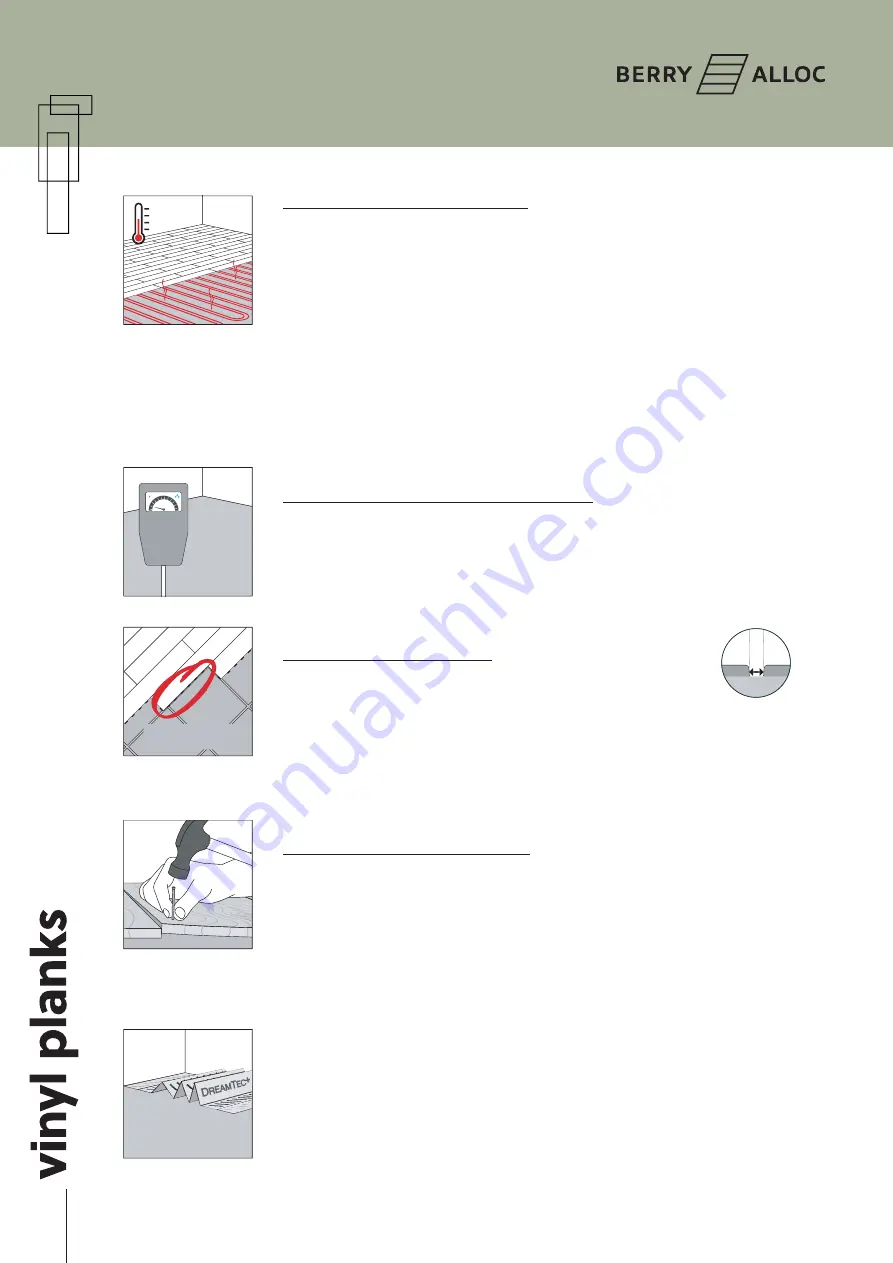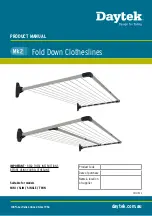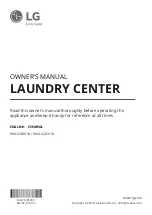
2
style
installation manual
Underfloor cooling and heating
Floor heating is also possible, provided that the heated floor temperature does not
exceed 27°C. Only underfloor heating systems with heating components – hot water
or electric – embedded in the floor are suitable. Heating films or other systems that are
placed ON the screed or subfloor are not suitable.
Switch off or lower the underfloor heating to 15°C 48 hours before installation and during
installation. 24 hours after installation, increase the underfloor heating gradually by 5°C
daily, up to a maximum floor temperature of 27°C. With electrical underfloor heating, we
advise not to exceed 60W/m².
The subfloor construction (surface) of the heating system must be hard.
Floor cooling uses the same systematic as the indirect floor heating systems. It is
important that the system is advanced enough to avoid condensation under the floor.
Otherwise fungi can start to grow. If the system is advanced enough, it can without
doubt be installed in combination with our floors.
Preparation of concrete/screed subfloor
Let new concrete dry sufficiently. The moisture content of the subfloor must be less than
75 RH at min. 20°C. Max 2 % CM for cement and 0.5 % for anhydrite. Where there is
underfloor heating, moisture content should be less than 1.8 CM%, and 0.3 CM% for
anhydrite. Always record and keep your moisture content results.
Repair surface imperfections with an appropriate repair compound and check if a primer
or sealer is needed. Vacuum the subfloor afterwards to remove all debris.
Preparation of tile subfloor
Check the subfloor for moisture problems.
The joints of the Style floor covering should never be aligned with
the underlying tile joints.
It is not necessary to fill the grouts of a subfloor comprised of ceramic tiles with joints
when these do not exceed 6 mm in width.
When installing Style on a tile subfloor, use the D underlay to overcome surface
imperfections.
Preparation of wooden subfloor
Check the floor for insect infestations.
Make sure the subfloor is level and nail down loose sections.
Wooden subfloors should always have access to air and should be ventilated.
UNDERLAY
We advise using the BerryAlloc LVT underlay (Dr) to reduce walking and sound
transmission performance. Other underlays might be used if they have a thickness of
maximum 1.5mm and a compressive strength of more than 400kPa. We do not guarantee
any acoustic or insulation properties with third party underlays.
2
Cement
<3% CM
CaSo
4
<0,5% CM
MOISTURE
METER
max.
27°C
Clicks not on top
of old tile joints
6mm
Cement
<3% CM
CaSo
4
<0,5% CM
MOISTURE
METER
max.
27°C
Clicks not on top
of old tile joints
6mm
Cement
<3% CM
CaSo
4
<0,5% CM
MOISTURE
METER
max.
27°C
Clicks not on top
of old tile joints
6mm
Cement
<3% CM
CaSo
4
<0,5% CM
MOISTURE
METER
max.
27°C
Clicks not on top
of old tile joints
6mm
Cement
<3% CM
CaSo
4
<0,5% CM
MOISTURE
METER
max.
27°C
Clicks not on top
of old tile joints
6mm
Cement
<3% CM
CaSo
4
<0,5% CM
MOISTURE
METER
max.
27°C
Clicks not on top
of old tile joints
6mm
















